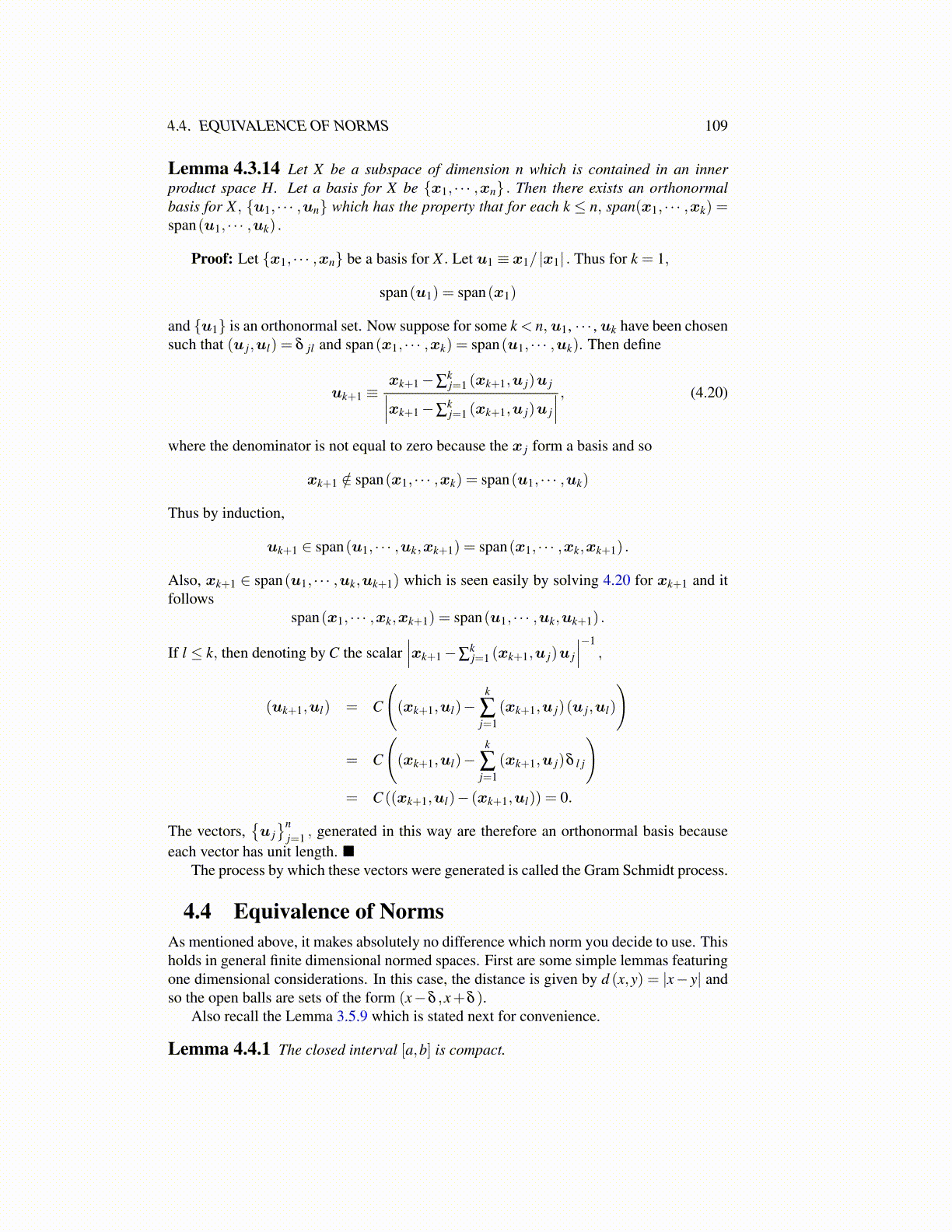
4.4. EQUIVALENCE OF NORMS 109
Lemma 4.3.14 Let X be a subspace of dimension n which is contained in an innerproduct space H. Let a basis for X be {x1, · · · ,xn} . Then there exists an orthonormalbasis for X , {u1, · · · ,un} which has the property that for each k ≤ n, span(x1, · · · ,xk) =span(u1, · · · ,uk) .
Proof: Let {x1, · · · ,xn} be a basis for X . Let u1 ≡ x1/ |x1| . Thus for k = 1,
span(u1) = span(x1)
and {u1} is an orthonormal set. Now suppose for some k < n, u1, · · · , uk have been chosensuch that (u j,ul) = δ jl and span(x1, · · · ,xk) = span(u1, · · · ,uk). Then define
uk+1 ≡xk+1−∑
kj=1 (xk+1,u j)u j∣∣∣xk+1−∑kj=1 (xk+1,u j)u j
∣∣∣ , (4.20)
where the denominator is not equal to zero because the x j form a basis and so
xk+1 /∈ span(x1, · · · ,xk) = span(u1, · · · ,uk)
Thus by induction,
uk+1 ∈ span(u1, · · · ,uk,xk+1) = span(x1, · · · ,xk,xk+1) .
Also, xk+1 ∈ span(u1, · · · ,uk,uk+1) which is seen easily by solving 4.20 for xk+1 and itfollows
span(x1, · · · ,xk,xk+1) = span(u1, · · · ,uk,uk+1) .
If l ≤ k, then denoting by C the scalar∣∣∣xk+1−∑
kj=1 (xk+1,u j)u j
∣∣∣−1,
(uk+1,ul) = C
((xk+1,ul)−
k
∑j=1
(xk+1,u j)(u j,ul)
)
= C
((xk+1,ul)−
k
∑j=1
(xk+1,u j)δ l j
)= C ((xk+1,ul)− (xk+1,ul)) = 0.
The vectors,{u j}n
j=1 , generated in this way are therefore an orthonormal basis becauseeach vector has unit length. ■
The process by which these vectors were generated is called the Gram Schmidt process.
4.4 Equivalence of NormsAs mentioned above, it makes absolutely no difference which norm you decide to use. Thisholds in general finite dimensional normed spaces. First are some simple lemmas featuringone dimensional considerations. In this case, the distance is given by d (x,y) = |x− y| andso the open balls are sets of the form (x−δ ,x+δ ).
Also recall the Lemma 3.5.9 which is stated next for convenience.
Lemma 4.4.1 The closed interval [a,b] is compact.